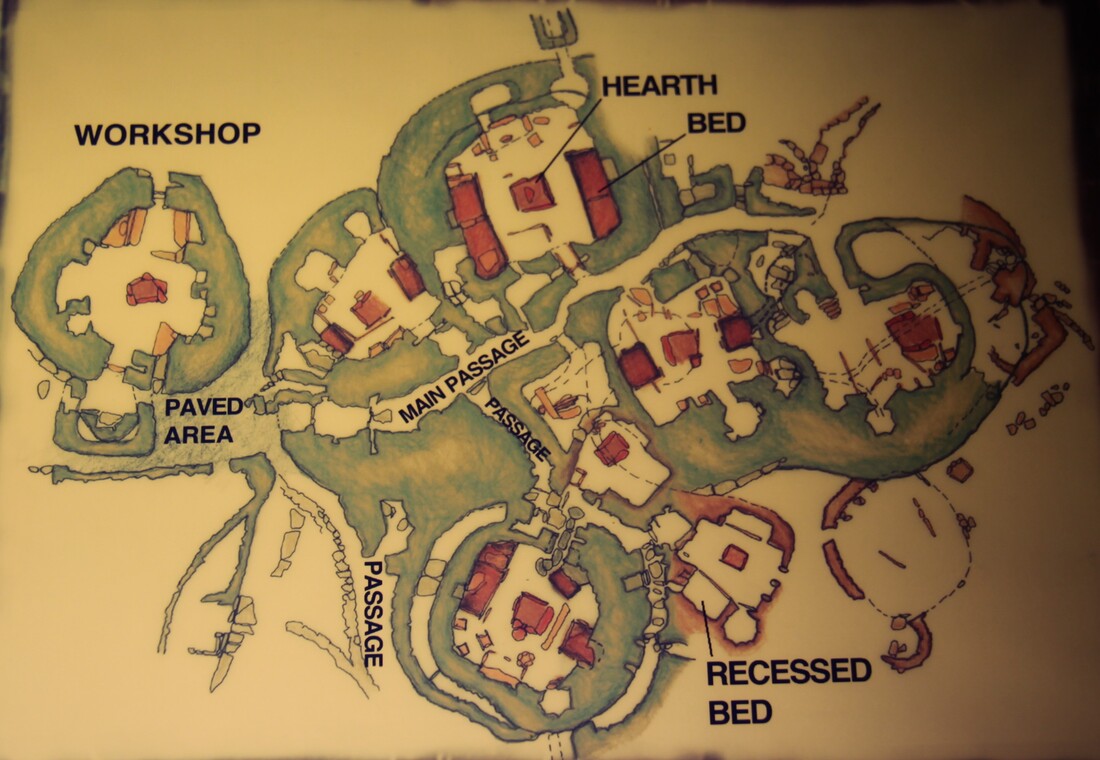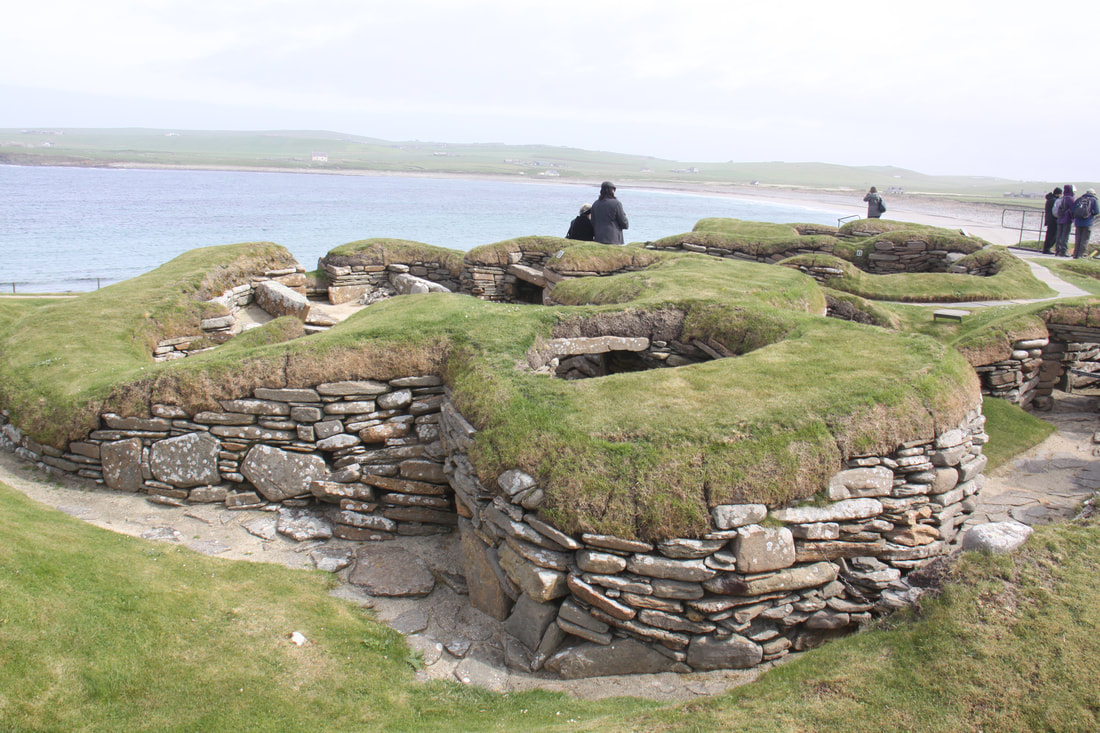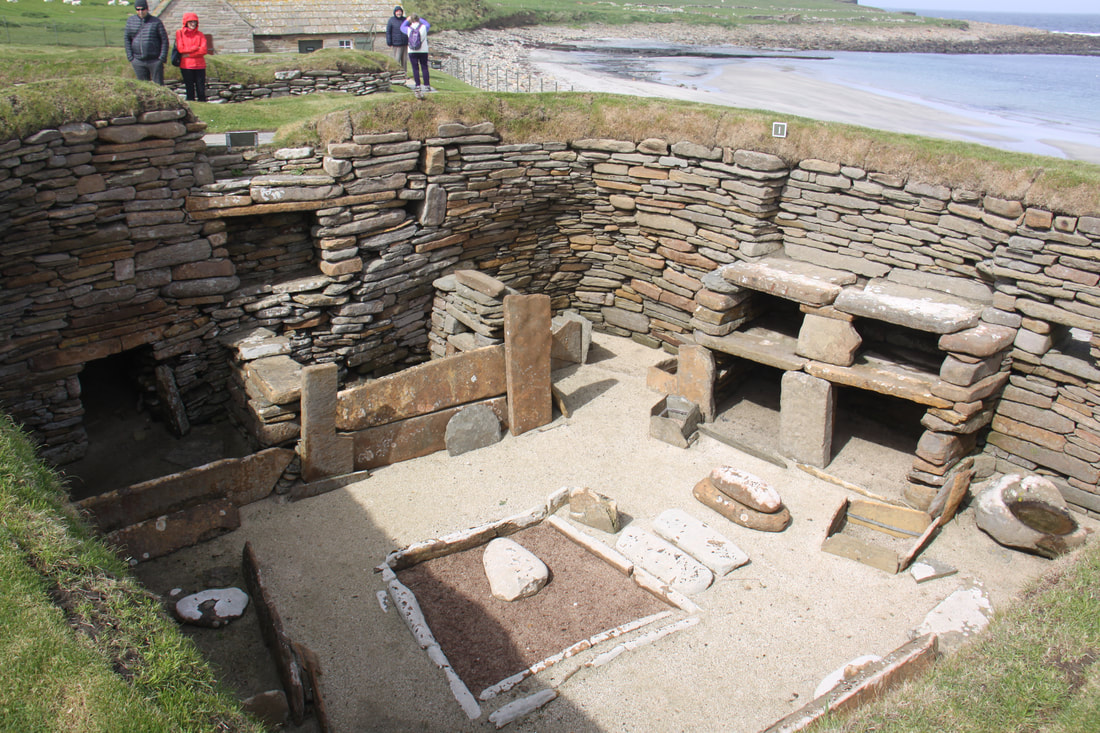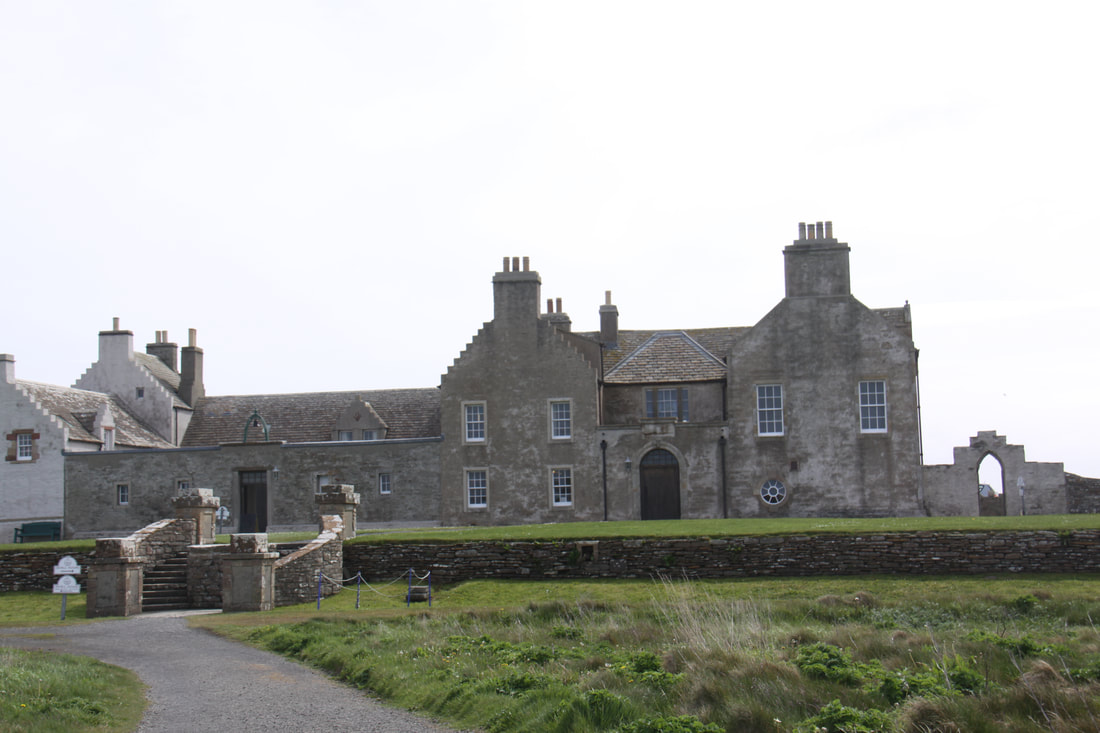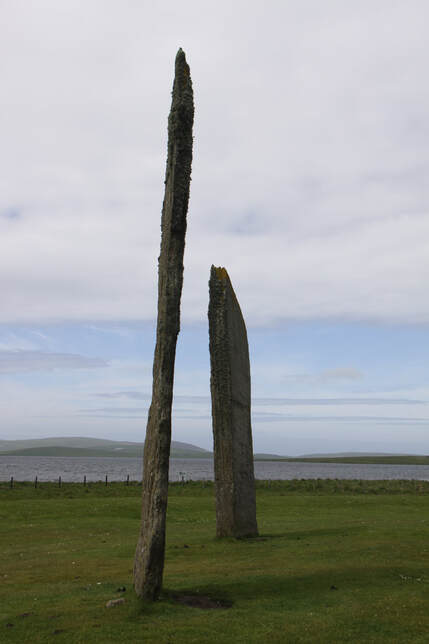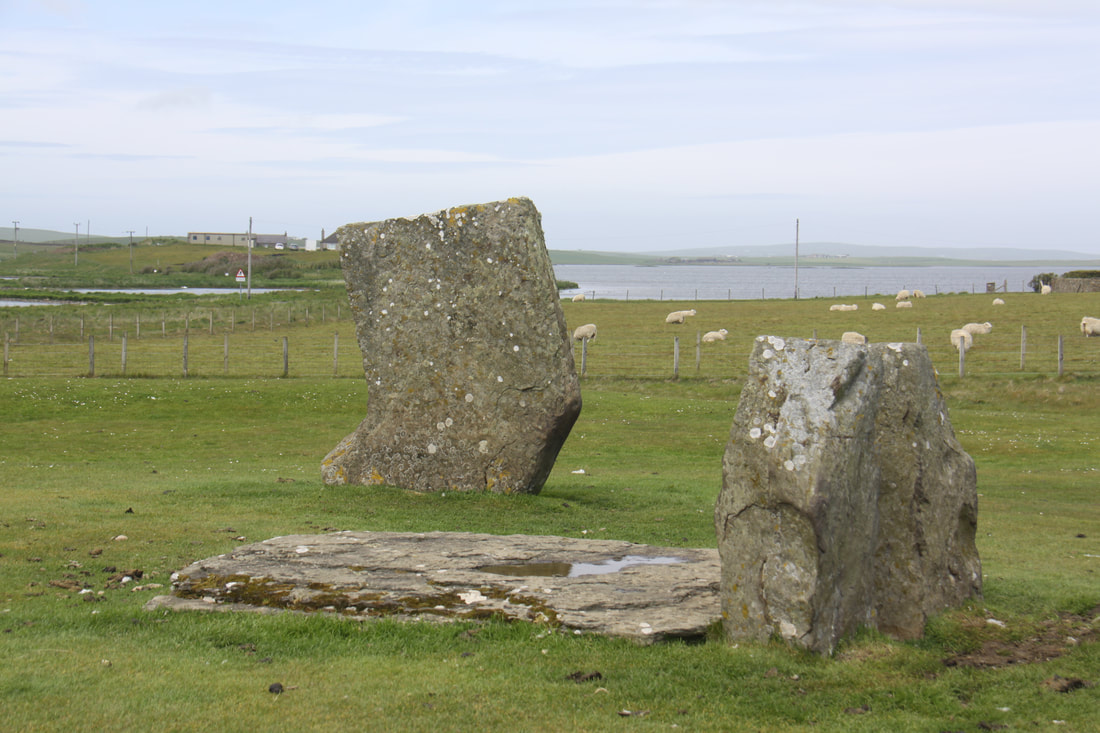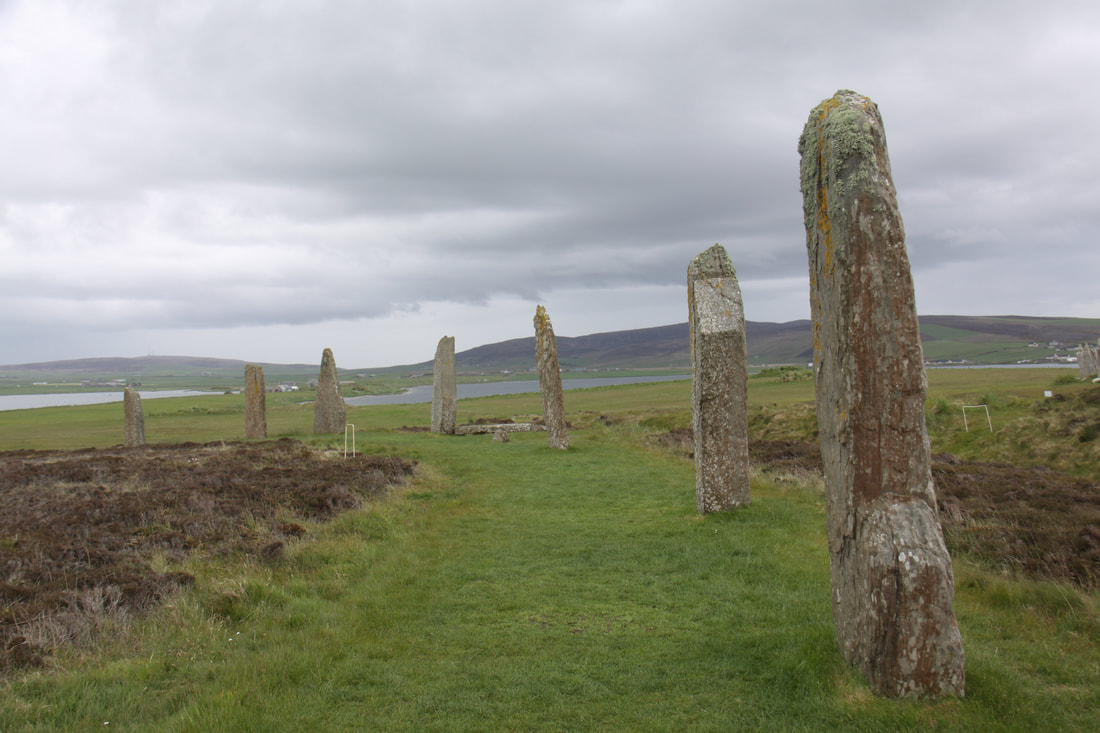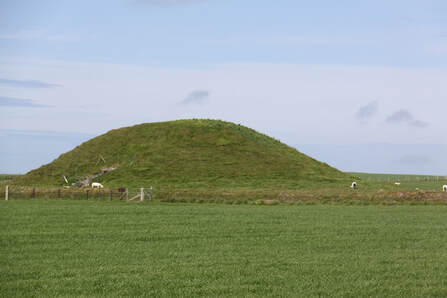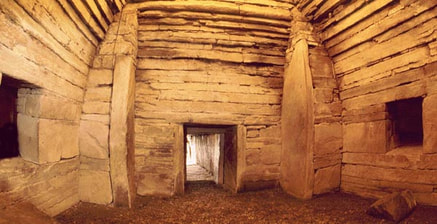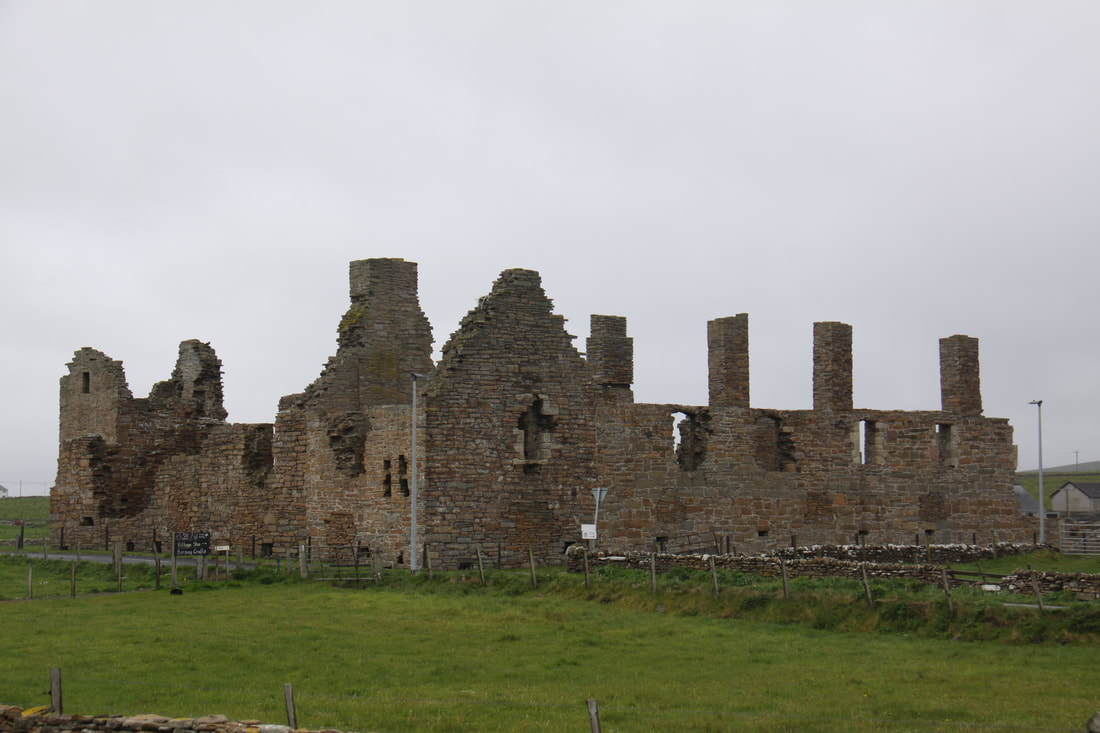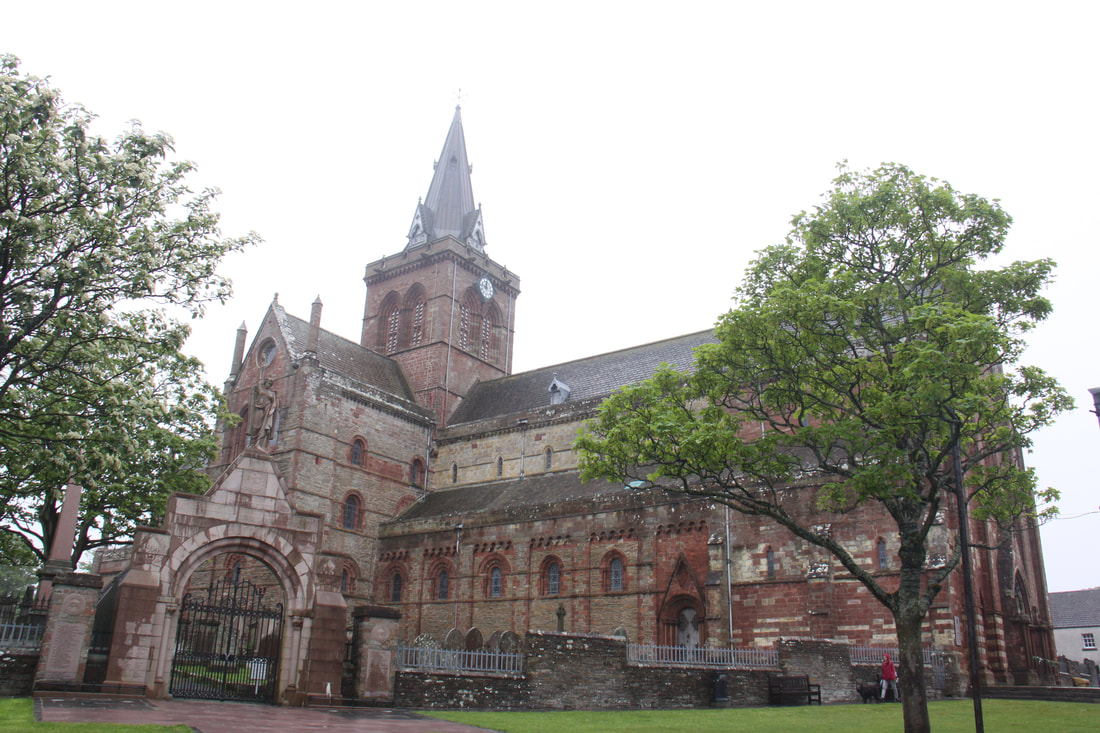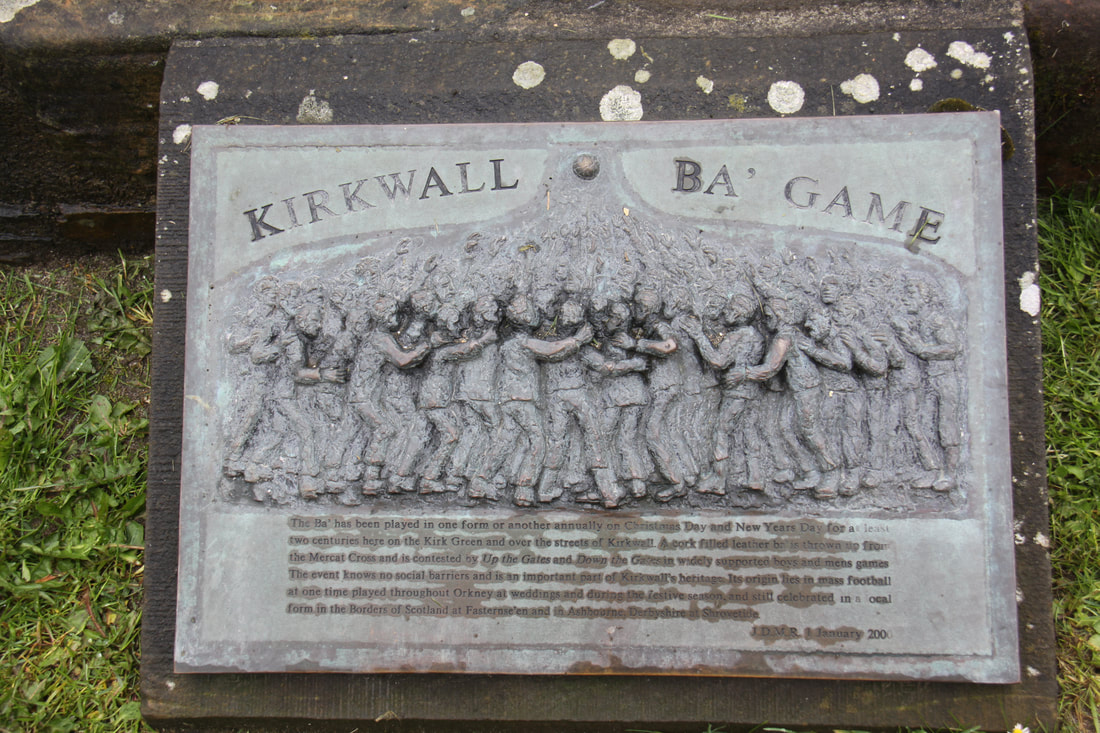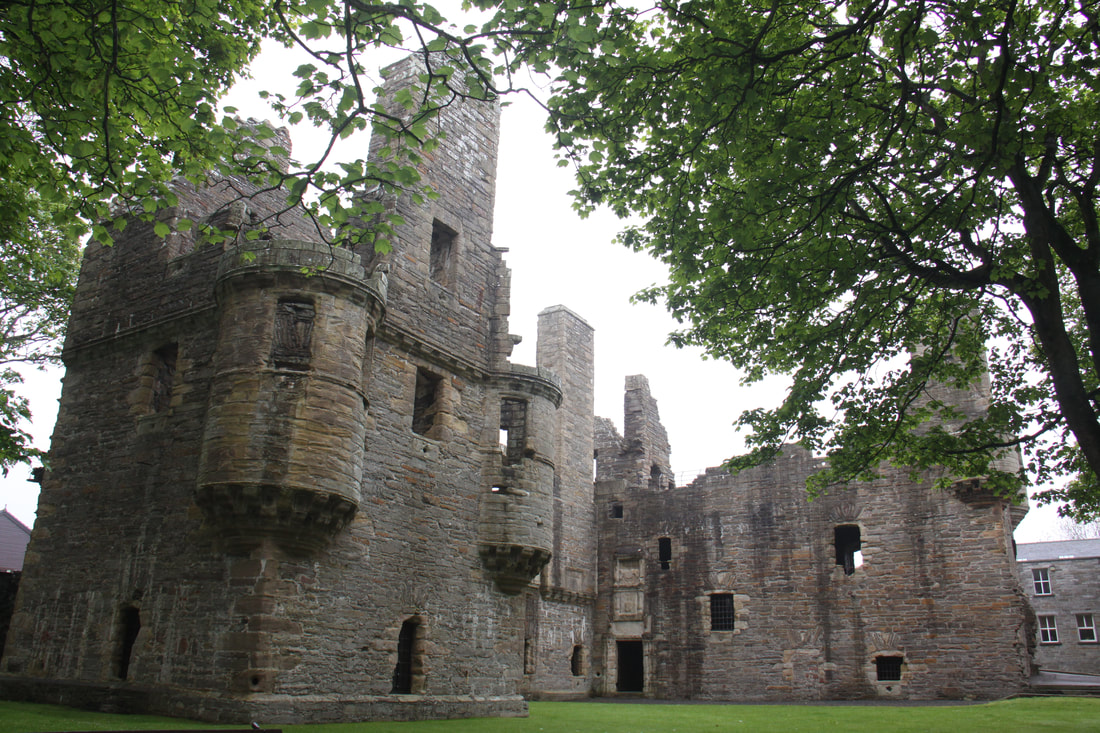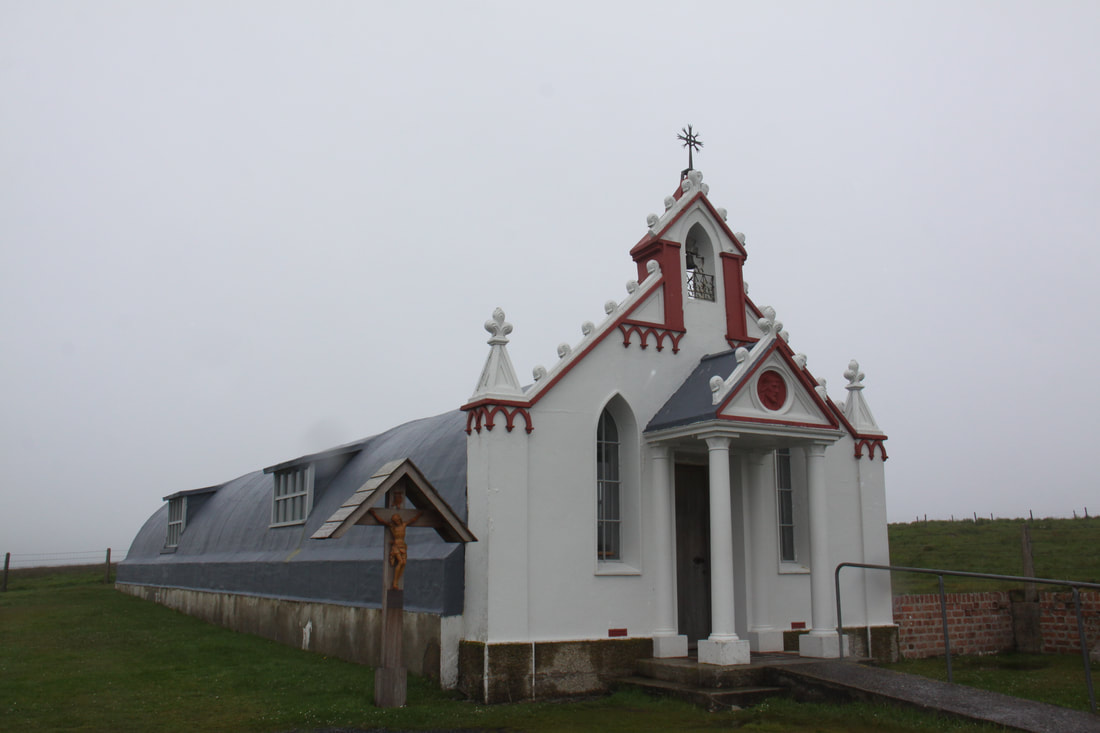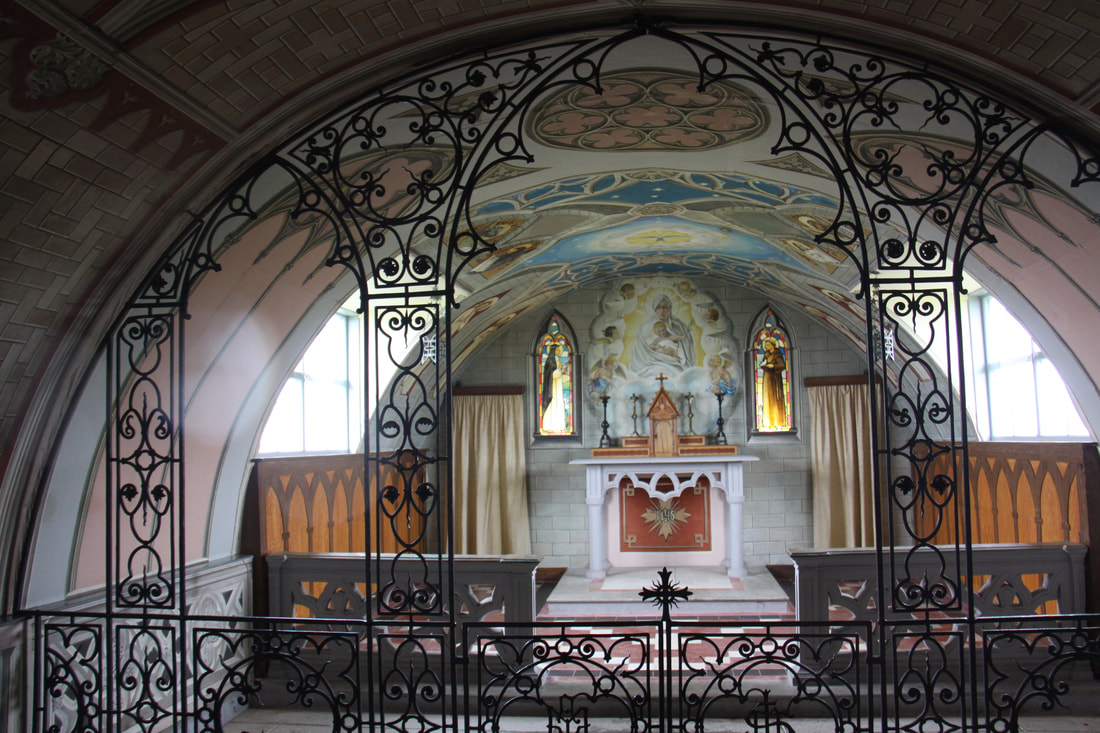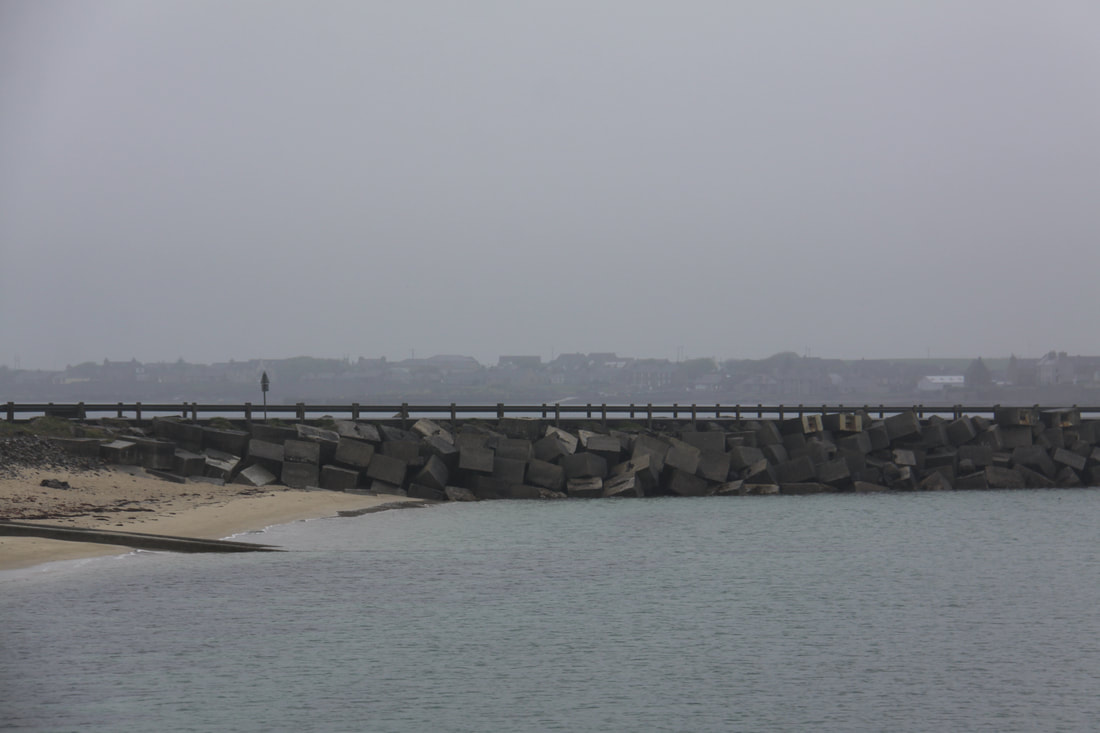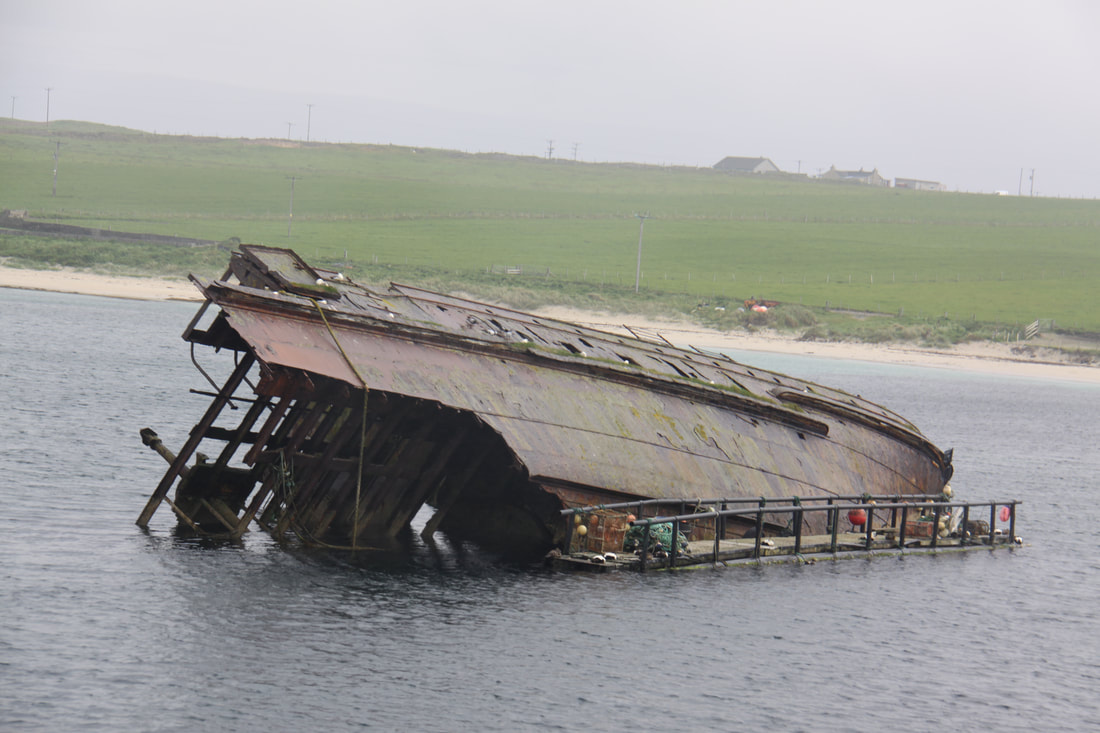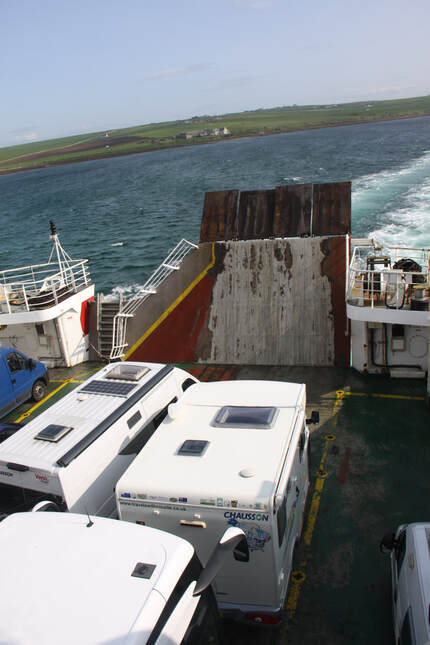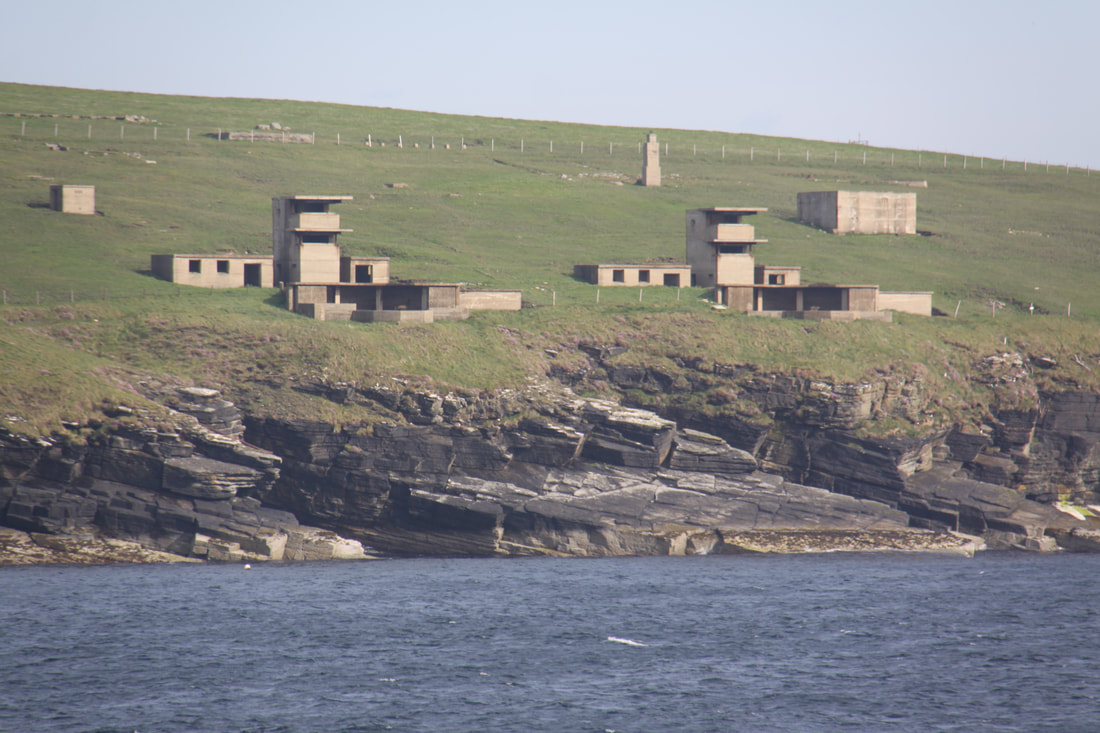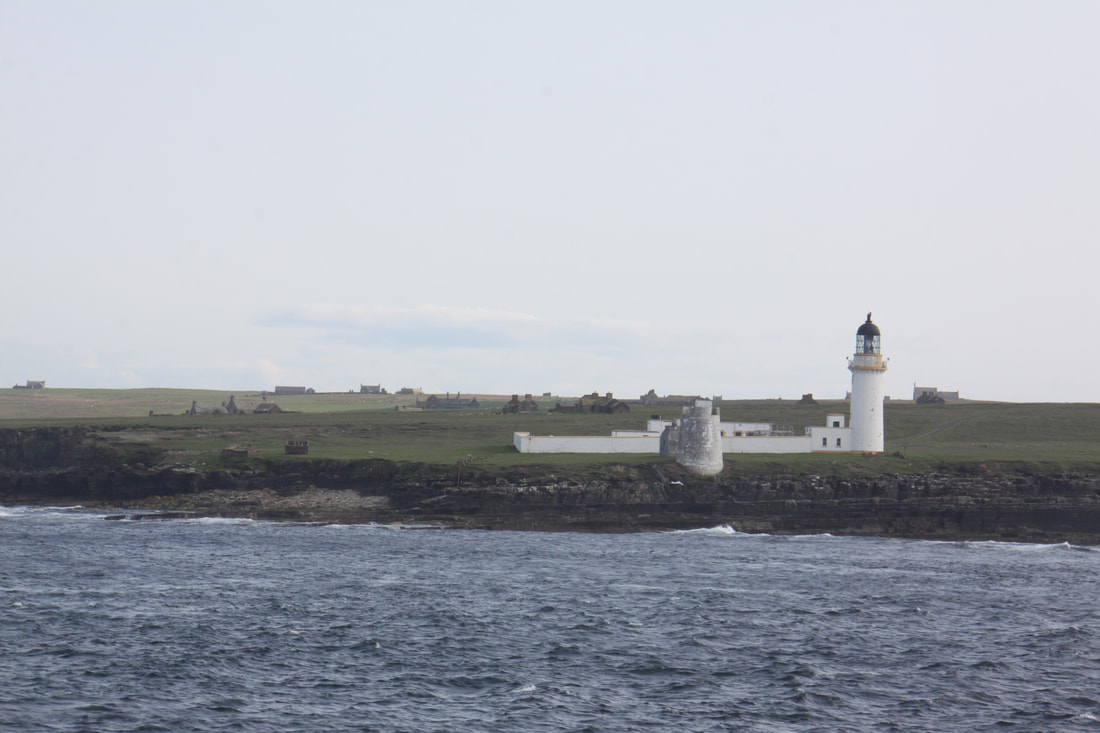Orkney
Saturday 1st June
A fairly decent start to the day so we were determined to see as many of the archaeological sites as we could before the weather got worse!
First stop for the day was at Skara Brae. Here, thanks to a severe storm in 1850 that ripped away the sand dunes which edged Skaill Bay, the remains of a Neolithic village built around 3000 BC were discovered. The village was remarkably well preserved and today it gave us a very clear insight into how Neolithic people lived and worked. The individual round shaped houses were linked together by narrow passages originally covered with turf. Each house had “built in” stone furniture – beds, cupboards, hearth, a dresser and a fireplace. On site a replica of one of these houses has been built. Skaill House was the home of William G. Watt. It was he who first discovered Skara Brae on his land after the storm of 1850. The house had many interesting features some dating back to the 1620’s when it was built for Bishop Graham.
A fairly decent start to the day so we were determined to see as many of the archaeological sites as we could before the weather got worse!
First stop for the day was at Skara Brae. Here, thanks to a severe storm in 1850 that ripped away the sand dunes which edged Skaill Bay, the remains of a Neolithic village built around 3000 BC were discovered. The village was remarkably well preserved and today it gave us a very clear insight into how Neolithic people lived and worked. The individual round shaped houses were linked together by narrow passages originally covered with turf. Each house had “built in” stone furniture – beds, cupboards, hearth, a dresser and a fireplace. On site a replica of one of these houses has been built. Skaill House was the home of William G. Watt. It was he who first discovered Skara Brae on his land after the storm of 1850. The house had many interesting features some dating back to the 1620’s when it was built for Bishop Graham.
We next visited the Stones of Stenness. There were originally twelve rock slabs in the circle but now only four remain, one being over 16 feet tall. In the centre of the henge there was a broken stone tabletop.Nearby was the remains of a much more impressive stone circle – Ring of Brodgar. Here there is a much wider stone circle with 27 out of the original sixty still standing. The ditch surrounding the henge has also survived.
Close to the remains of the two stone circles lies Maes Howe, an impressive burial chamber dating back to 3000 BC. To visit we had to have a guided tour. The entrance was built so that on the winter solstice light shone directly into the low, narrow entry tunnel. Within the central chamber there are three cells set into the walls. Viking runic graffiti is carved into the walls.
Close to the remains of the two stone circles lies Maes Howe, an impressive burial chamber dating back to 3000 BC. To visit we had to have a guided tour. The entrance was built so that on the winter solstice light shone directly into the low, narrow entry tunnel. Within the central chamber there are three cells set into the walls. Viking runic graffiti is carved into the walls.
To end the day we drove to the northwest corner of Mainland Orkney where, in Birsay, there is a brough and also the impressive remains of the Earl’s Palace built in the 16th century by island forced labour.
Tonight we parked on the Brough of Birsay visitors’ carpark – fantastic sea views on two sides. Apart from a few long and heavy showers the weather had stayed reasonable today but soon after parking up it came on very heavy and our views disappeared!
Sunday 2nd June
We woke up to heavy rain and very low cloud.
After stopping briefly to view the ruins of the Earl’s Palace in Birsay, we headed for Kirkwall – no problem parking close to the old town. St Mary’s Cathedral dates from 1137 and is a fine red sandstone building. In the graveyard is a plaque to the "Kirkwall Ba' Game", an early version of football with many players on both sides and little, or no, rules!
Across the road from the cathedral are the remains of another Earl’s Palace which was built around 1600 using forced labour. Opposite are the remains of the Bishop’s Palace which was originally built in the 12th century, although much of what is now left dates from the 16th.
Tonight we parked on the Brough of Birsay visitors’ carpark – fantastic sea views on two sides. Apart from a few long and heavy showers the weather had stayed reasonable today but soon after parking up it came on very heavy and our views disappeared!
Sunday 2nd June
We woke up to heavy rain and very low cloud.
After stopping briefly to view the ruins of the Earl’s Palace in Birsay, we headed for Kirkwall – no problem parking close to the old town. St Mary’s Cathedral dates from 1137 and is a fine red sandstone building. In the graveyard is a plaque to the "Kirkwall Ba' Game", an early version of football with many players on both sides and little, or no, rules!
Across the road from the cathedral are the remains of another Earl’s Palace which was built around 1600 using forced labour. Opposite are the remains of the Bishop’s Palace which was originally built in the 12th century, although much of what is now left dates from the 16th.
Leaving Kirkwall we headed south to visit the beautiful Italian Chapel situated on the tiny island of Lamb Holm. During WW2, this small, uninhabited island was "home" to 1200 Italian prisoners of war. The chapel was constructed from two Nissen huts and was nicknamed “Miracle of Camp 60”. The ornate white exterior goes some way in preparing you for the interior where whatever materials were at hand were used to cover the walls. The sanctuary is ornate and highly decorated with beautiful “tromp l’oeil” décor that just takes ones breath away.
The Italian prisoners of war were on Orkney to help build the Churchill Barriers. These are a series of causeways built to protect the vast natural harbour of Scapa Flow which served as the main base for the Royal Navy during both world wars. In 1919 at the end of WW1, the entire German High Seas Fleet were scuttled – it was possible to view some of these wrecks that lie on the landward side of the Churchill Barriers.
The Italian prisoners of war were on Orkney to help build the Churchill Barriers. These are a series of causeways built to protect the vast natural harbour of Scapa Flow which served as the main base for the Royal Navy during both world wars. In 1919 at the end of WW1, the entire German High Seas Fleet were scuttled – it was possible to view some of these wrecks that lie on the landward side of the Churchill Barriers.
Later in the day, after a wait to see if there was space, we took the ferry from St. Margaret’s Hope back to Gill’s Bay on mainland Scotland. The crossing was smooth and fairly dry so we stayed up on deck. We passed some WW2 gun emplacements and the islands of Swona and Stroma. The latter was formerly inhabited but the settlement has now been abandoned.
On arrival in Gill’s Bay we stayed overnight on the harbour carpark.
On arrival in Gill’s Bay we stayed overnight on the harbour carpark.
